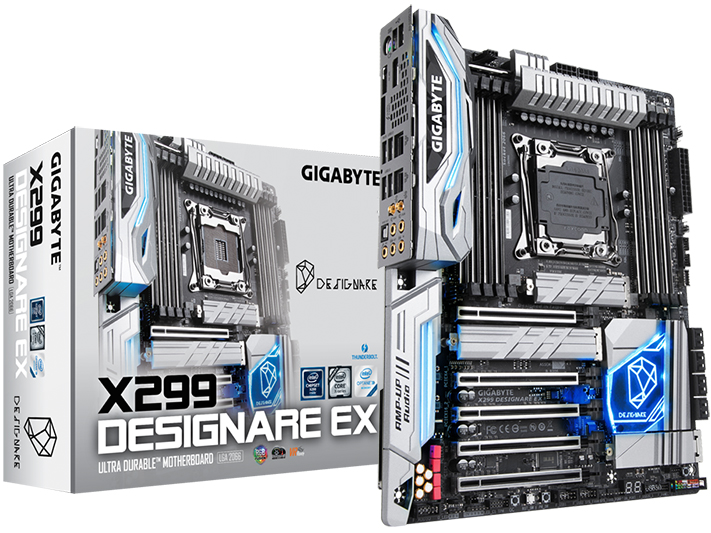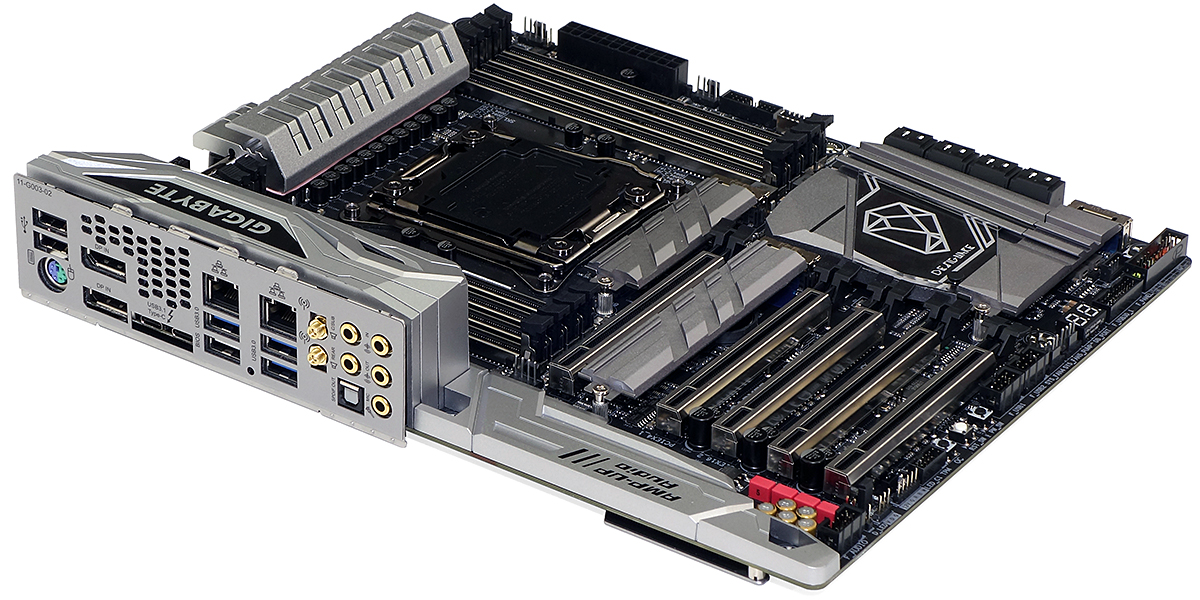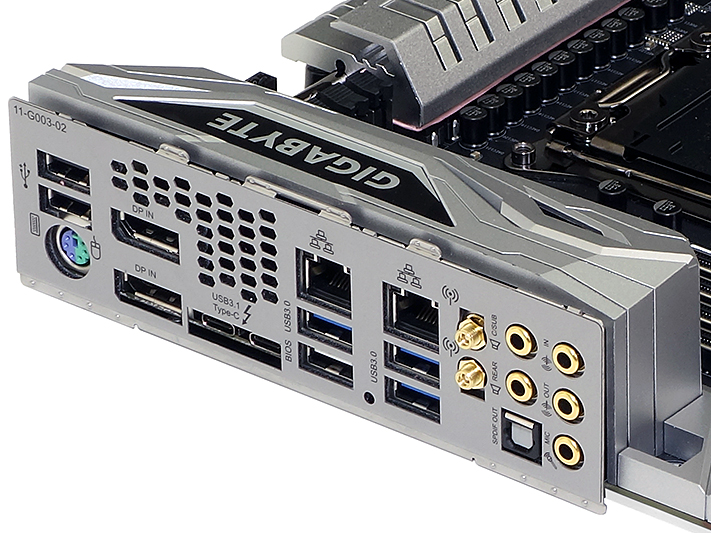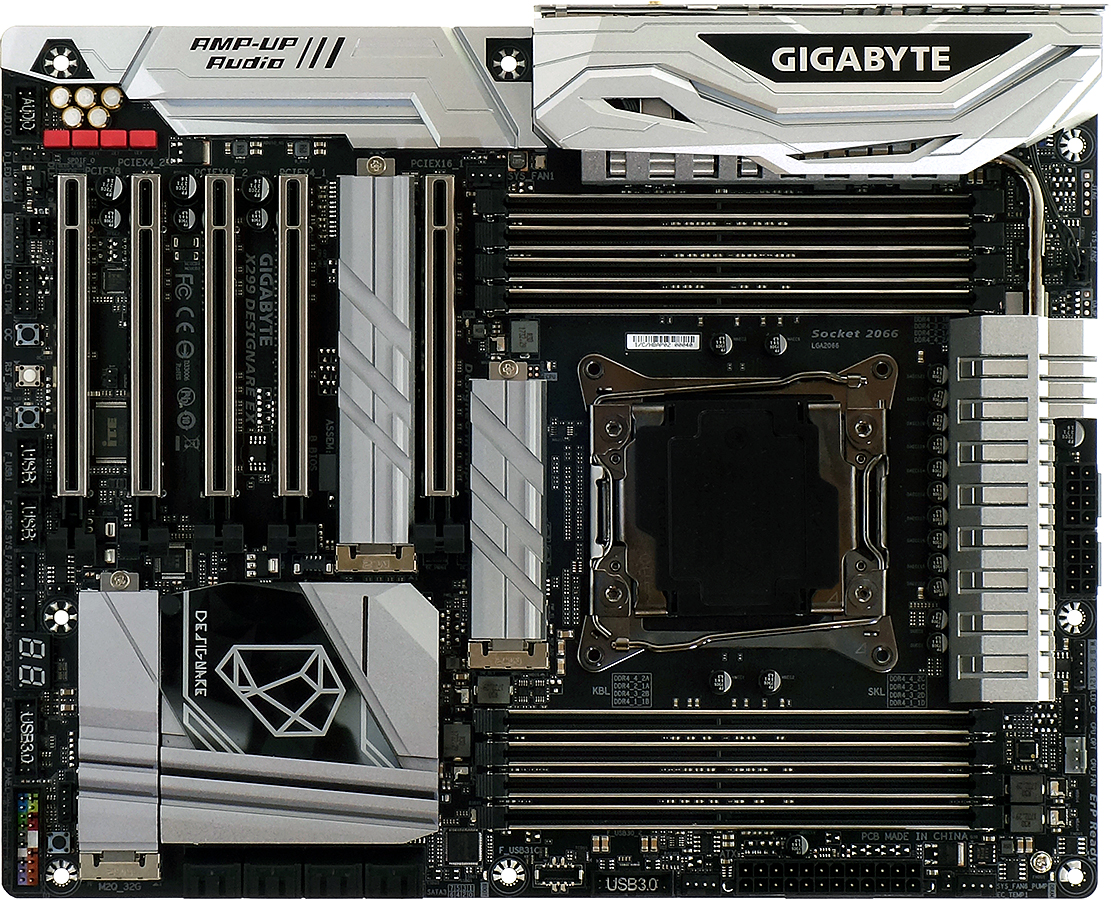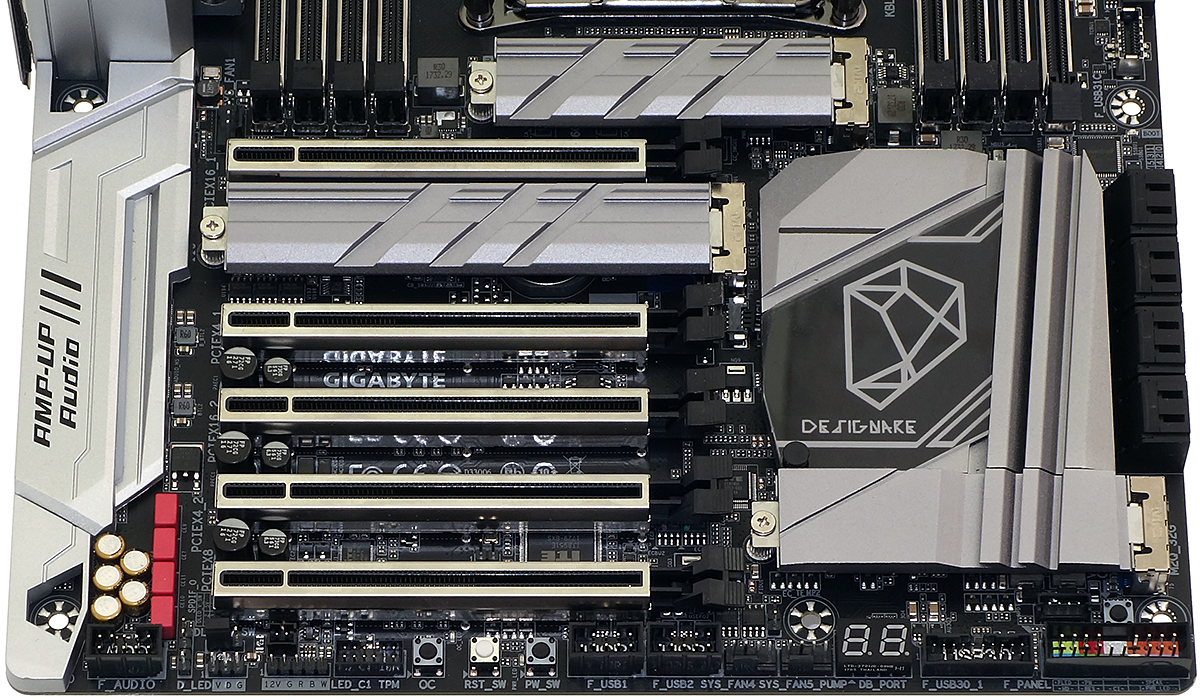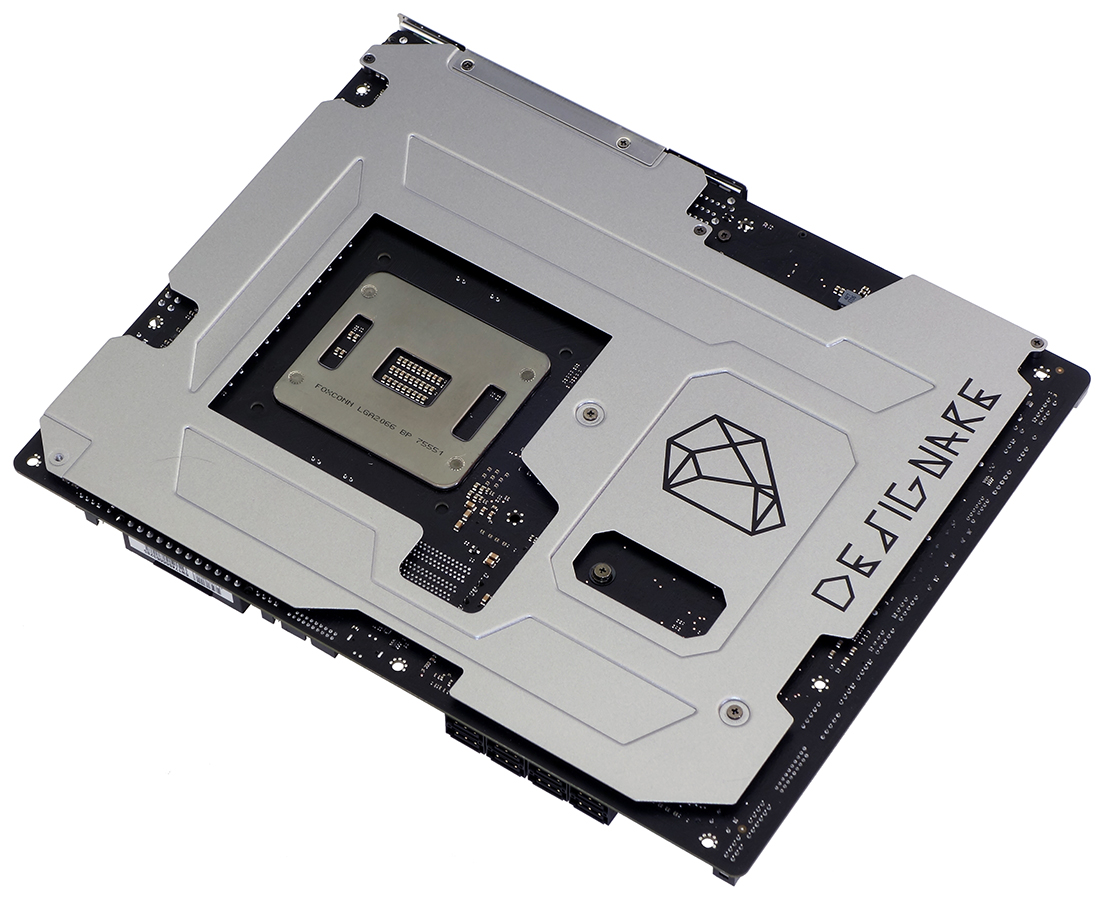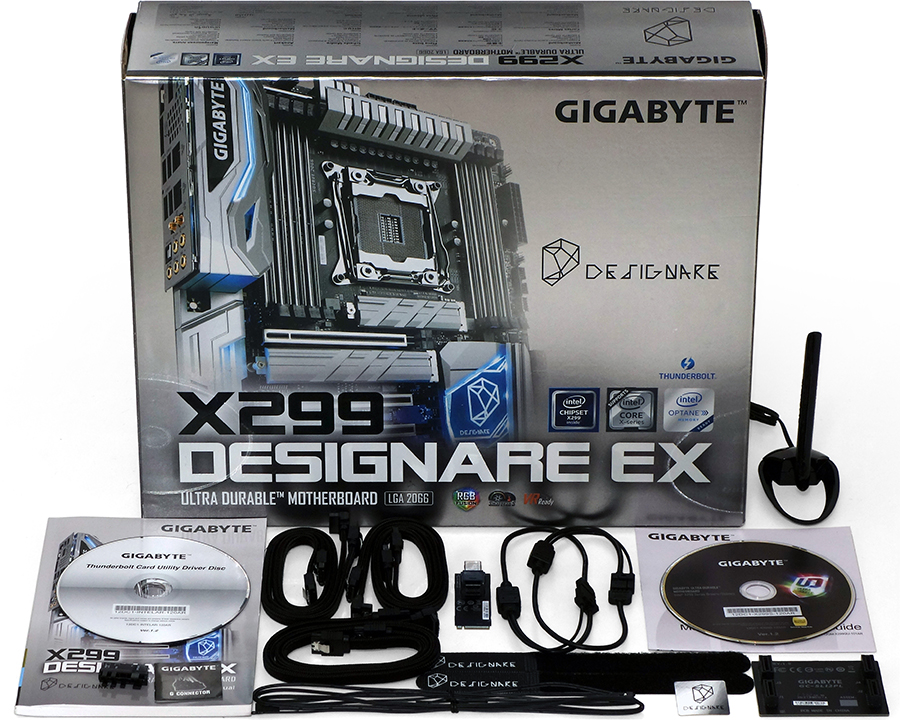Early Verdict
Buyers with the need for Thunderbolt 3 will find a great variety of added features, along with solid overclocking capability, in the X299 Designare EX.
Pros
- +
Full 40Gb/s Intel Thunderbolt 3 with DisplayPort passthrough (two ports)
- +
Good CPU and DRAM overclocking
- +
Dual Ethernet plus 867Mb/s Wi-Fi
- +
Extra M.2 and four-lane PCIe slot
Cons
- -
Extra M.2 and PCIe slot share lanes
- -
Poor energy efficiency
Why you can trust Tom's Hardware
Features & Layout
Intel refers to the X299 platform as “High-End Desktop” (HEDT), but the term "high-end" means different things to different people. A gamer might think the top mainstream parts are better because they support higher overclocks, while a power user would scoff at that platform’s lack of connectivity. The overlap continues as the cheapest HEDT components don’t even have any of the features called “high end” when placed on a mainstream platform.
Conversely, some boards far exceed "high-end" expectations. And the X299 Designare EX’s feature set places it among these elite parts.
Since its metal parts are painted the same aluminum color as its plastic parts, we should probably start off by mentioning that all of the sinks and M.2 covers are aluminum. Likewise striking is an I/O shield mounted to the board and designed to press up against the edges of the hole in the back of a case, rather than snap into that hole, a feature normally reserved for OEM system components.
Specifications
The best news is that Gigabyte took nearly every criticism we leveled against its Aorus Gaming 7 and used it as an opportunity to build a board, basically, for us. That should make it a shoo-in for our highest award. Yet the X299 Designare EX is not a variation of the Aorus Gaming 7 despite design similarities, and this model must still stand on its own merits.
The headline upgrade is on the I/O panel, where we see not one but two Type-C connectors. And just when you were about to say, “So what, the Gaming 7 had 10Gb/s Type-A and Type-C ports,” you should probably notice the inputs next to those ports. Gigabyte equipped the X299 Designare EX with Intel’s latest JHL6540 Thunderbolt 3 controller, providing up to 36Gb/s of PCIe bandwidth, plus DisplayPort pass-through. Users with the right equipment get to choose whether to pass all 40Gb/s through a single cable or through two. Or you can just connect a couple of USB 3.1 Gen2 devices, with each at its full 10Gb/s bandwidth. Choices, choices…
The X299 chipset still has the same HSIO restrictions as the Z370, so the extra lanes required for the Thunderbolt 3 controller must come from somewhere. Gigabyte substitutes two USB 2.0 ports for the previously reviewed model’s USB 3.0, and that’s fine with us, since it’s the standard for keyboards and mice. More concerning to those who need a bunch of USB 3.0 is that all four ports are connected to a single chipset port through a hub. The chipset’s remaining 25 HSIO connections go to six SATA ports, a PCIe-based 2-port SATA controller, two front-panel USB 3.0 headers (four ports), a PCIe 3.0 x2 controller for front-panel USB 3.1 Gen2, an M.2 Key-E based Wi-Fi controller, the second Gigabit Eithernet controller, an M.2 NVMe slot, and two four-lane PCIe expansion card slots. But wait, doesn’t this board have three NVMe interfaces?
The first, third, and fifth expansion slots are served by CPU lanes, allowing a 44-lane CPU to support three graphics cards in x8/x16/x8 mode, a 28-lane CPU to support three graphics cards in x8/x8/x8 mode, and a 16-lane CPU to support two cards in x8/x8 mode with the third slot disabled. The second PCIe slot shares four lanes with the middle M.2 interface, so that builders can choose whether to install an NVMe drive on either interface (but not both). And the third M.2 slot takes all four HSIO resources from SATA, shutting off ports 4 through 7, so that we can’t count one without excluding the other. The fourth PCIe slot is permanently connected to the X299 PCH, but most SLI and CrossFire users will lose access to that slot when it’s covered by the graphics cooler of the card above. We’re still not sure why Gigabyte would choose to keep that slot active at all times, rather than the second slot, but trace-routing optimization probably had much to do with its decision. And we’re not sure why Gigabyte couldn’t have shared that slot with the third M.2 rather than a bunch of SATA, but ditto on what we said a sentence ago.
Get Tom's Hardware's best news and in-depth reviews, straight to your inbox.
Apart from a usually-exposed slot being disabled for the sake of M.2 while an often-covered slot remains always-on, the X299 Designare EX has a great set of features. The bottom edge of the board is lined with front-panel audio, S/PDIF-out, digital LED, one (of two) RGBW, TPM, dual USB 2.0, two (of eight) PWM/voltage switchable fan, one (of two) thermistor, one (of two) USB 3.0, and VROC module headers. We also find a button to enable the board’s programmed 4.7GHz O/C, a reset button, a power switch, a two-digit status code display, the front panel LED/switch group header, and a CLR_CMOS button. Our greatest concern, that the USB 3.0 header will be nullified by a bottom-mounted graphics card, is small since most cases don’t have four USB 3.0 headers. And our least concern is that the front-panel audio cables of some cases won’t reach all the way to the bottom-rear corner header: Such poorly specified cables typically come up less than an inch short, and most case companies have solved that issue.
Appealing to users of open platforms and frame-style cases, Gigabyte covers the back of its X299 Designare in a steel plate that’s covered in the same aluminum-silver paint as the aluminum heat sinks and plastic trim.
On one hand, it was very thoughtful of Gigabyte to include an M.2-to-U.2 adapter in the X299 Designare EX installation kit. On the other hand, it reminds us that putting the card in the lower M.2 slot will disable four of the SATA ports. Other pieces include a cable bundler for front-panel switch and LED connections, six SATA cables (if you can use them), two RGBW splitters, two Velcro cable ties, two thermistor leads, a Wi-Fi antenna, and a high-bandwidth SLI bridge.
MORE: Best Motherboards
MORE: How To Choose A Motherboard
MORE: All Motherboard Content
